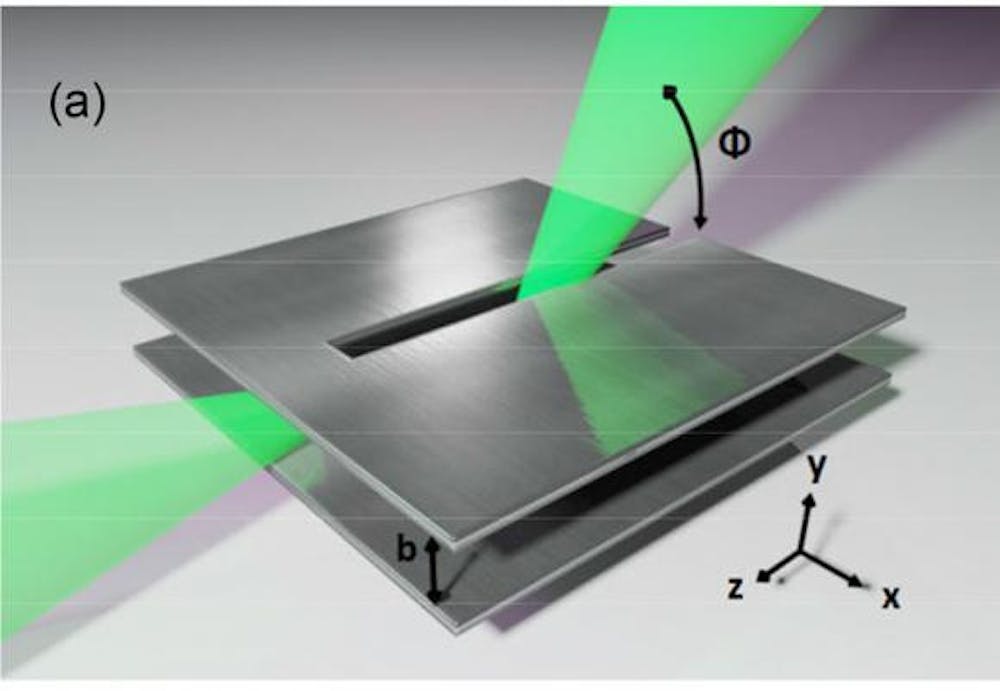New research led by a Brown graduate student and professor explores a new technology they believe has promise to be much faster than current communication signals such as Wi-Fi. The paper, published in Nature online Sept. 14, marks a significant contribution to telecommunications by creating a proof-of-concept of data processing in the terahertz wave spectrum.
The research team created a terahertz multiplexer — a relatively simple mechanism that can both combine and separate information waves. Using a frequency called the terahertz spectrum, on which little research has focused, this system has the capability to rapidly increase the speed and size of wireless data transfer, said Professor of Engineering Daniel Mittleman, the senior author of the paper.
Terahertz waves, unlike their microwave and infrared counterparts, are capable of much higher rates of data transfer — up to 100 times faster, said lead author Nicholas Karl GS. Terahertz has the potential to be even faster than Wi-Fi, he added.
Karl, who works in Mittleman’s lab, said the multiplexer consists of two aluminum plates with a slit through the top, adding that the technology takes advantage of a phenomenon known as a “leaky wave antenna.”
Collaborating with a researcher at the University of Tokyo, Mittleman’s lab showed that different wave inputs will escape through the slit at different fixed angles. A single data stream can then be split into a variety of independent information waves, or vice versa, almost like the way a beam of light splits into color through a prism, Karl said.
Mittleman likens the multiplexer to a cell phone tower; both take in separate frequencies and manage to parse apart the information, such as multiple callers in the same area. The Mittleman lab is in the process of fully transitioning to Brown from Rice University, where the work was completed.
The terahertz field is an exciting area for Mittleman, as he has spent over 20 years researching the wave’s capabilities. He said he sees his lab and the University at the forefront of implementing this technology over the next few years, working on new devices and ways to implement the wave spectrum in daily life.
Karl agreed, adding that such systems could supplement current telecommunications in high-impact areas, such as at a conference center. He said he is personally excited about new man-made discoveries arising out of the study of terahertz waves, such as material design and imaging.
While this research is a significant contribution to telecommunication research, it is not yet a complete system, wrote Ian Akyildiz, chair professor in telecommunications at Georgia Institute of Technology, in an email to The Herald. Akyildiz was not involved with the team’s research.
The research paper neither uses actual communication signals nor experiments with the entire range of waves in the terahertz spectrum, he wrote.
Still, Akyildiz wrote that he hopes the use of such technology is not too far off, adding that the telecommunication sector may begin implementing terahertz waves within three to five years. Akyildiz wrote that he supports Mittleman’s “relevant” work and believes exciting times are coming to the field in terms of regulation, standardization and material design. “This type of work should be encouraged and extended,” he wrote.





